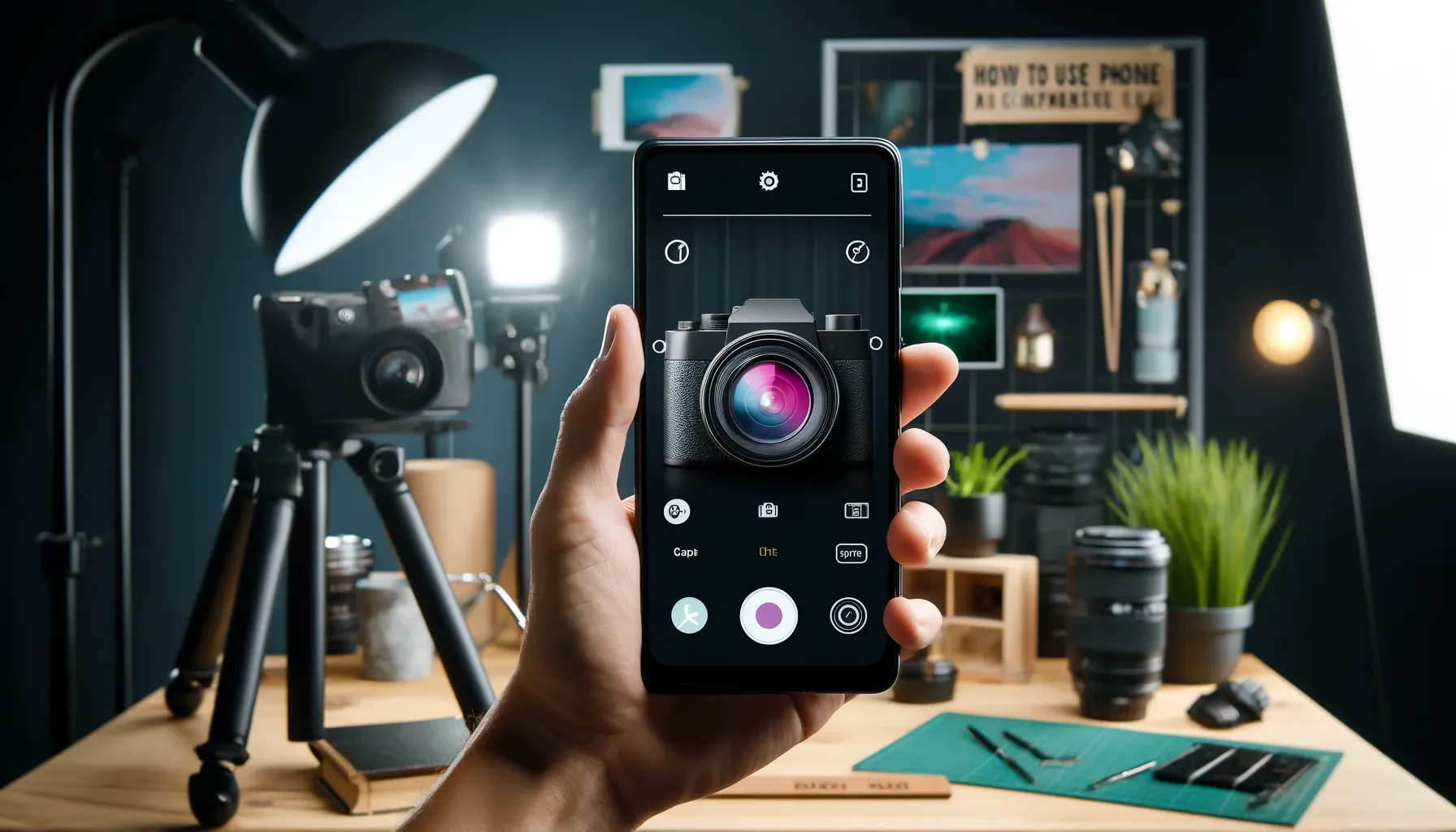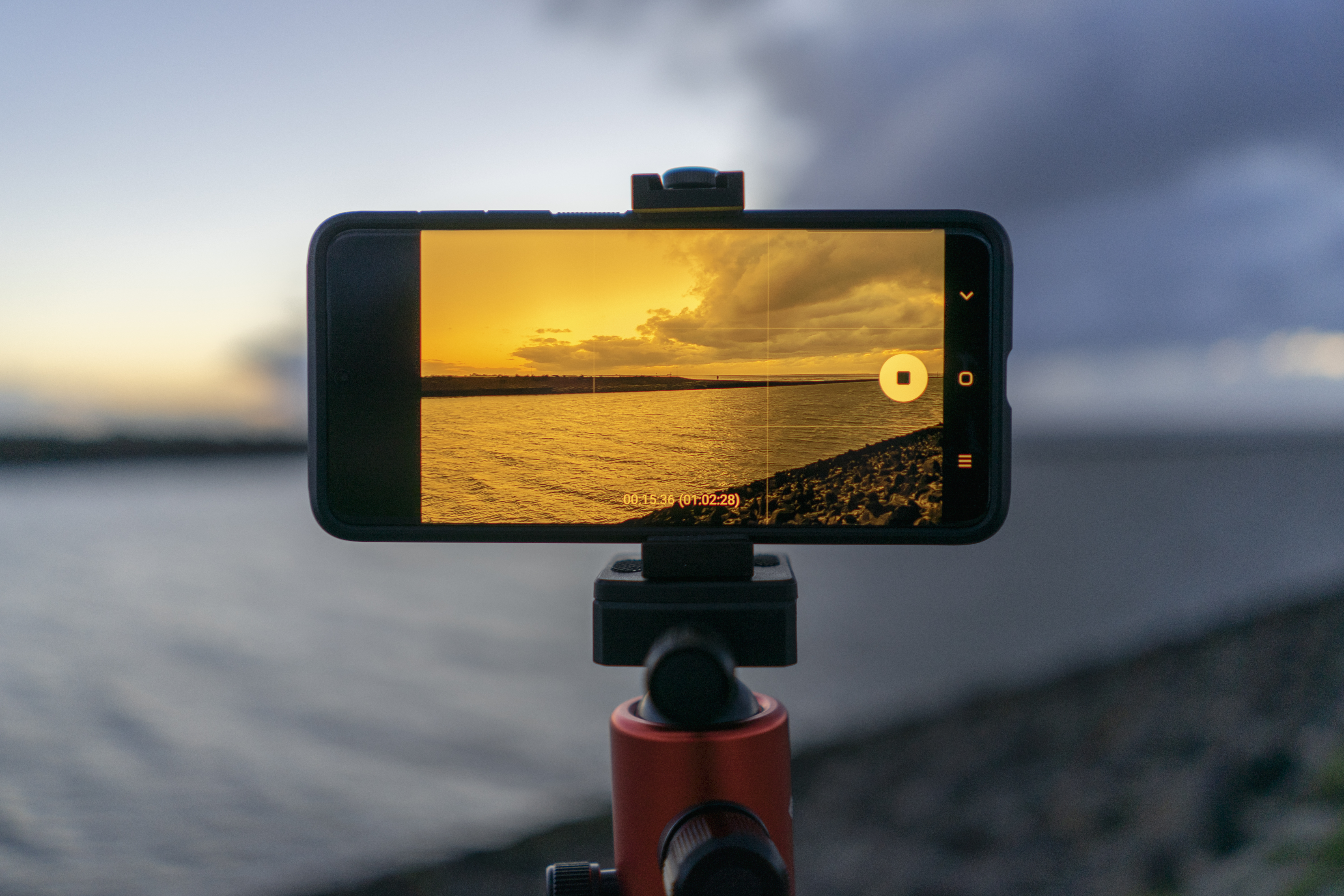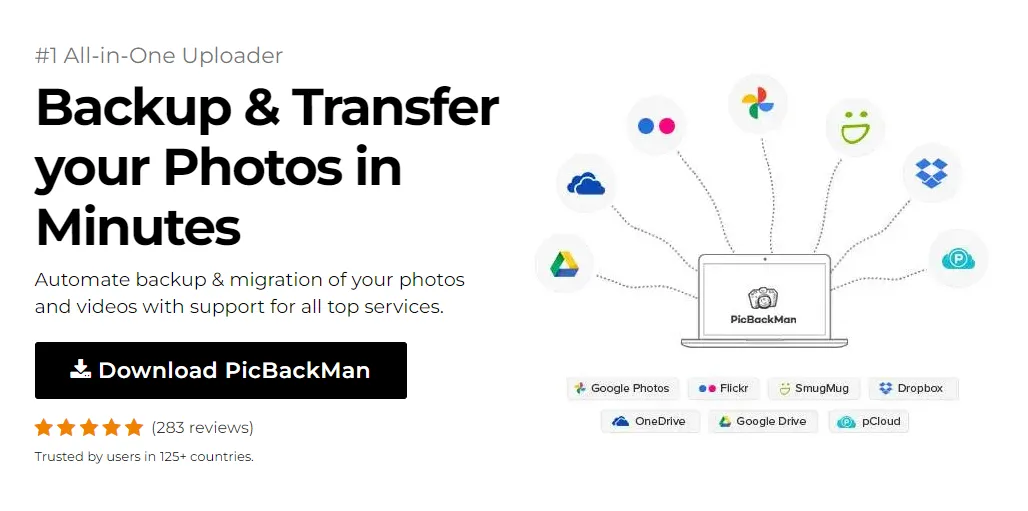
Why is it the #1 bulk uploader?
- Insanely fast!
- Maintains folder structure.
- 100% automated upload.
- Supports RAW files.
- Privacy default.
How can you get started?
Download PicBackMan and start free, then upgrade to annual or lifetime plan as per your needs. Join 100,000+ users who trust PicBackMan for keeping their precious memories safe in multiple online accounts.
“Your pictures are scattered. PicBackMan helps you bring order to your digital memories.”
How to use phone camera?


In today's digital age, our smartphones have evolved into powerful photography tools. Whether you're capturing memories on a family vacation or snapping quick shots of your daily life, knowing how to use your phone camera effectively can make a significant difference. This comprehensive guide will walk you through everything you need to know about using your phone camera, from basic settings to advanced techniques.
1. Understanding Your Phone Camera Features
Modern smartphones come equipped with a plethora of camera features. Understanding these features is the first step towards mastering your phone camera. Most phone cameras include options such as portrait mode, night mode, panorama, and various filters.
2. Setting Up Your Camera
Before diving into photography, it's essential to set up your camera correctly. This includes adjusting the resolution, aspect ratio, and other settings to match your preferences.
3. Mastering the Basics of Composition
Good composition is the foundation of great photography. Learn about the rule of thirds, leading lines, and other compositional techniques that can enhance your photos.
4. Utilizing Natural Light
Lighting can make or break a photo. Discover how to use natural light to your advantage, whether you're shooting indoors or outdoors.
5. Exploring Camera Modes
Phone cameras offer various modes for different types of photography. Understand when and how to use modes like portrait, night, and macro for the best results.
6. Adjusting Focus and Exposure
Manual control over focus and exposure can significantly improve your photos. Learn how to adjust these settings to capture clear and well-lit images.
7. Using HDR Mode
High Dynamic Range (HDR) mode can help balance the light and dark areas in your photos. Find out when and how to use HDR mode effectively.
8. Taking Advantage of Burst Mode
Burst mode allows you to capture multiple shots in quick succession. This is particularly useful for action shots and candid moments.
9. Editing photos on your phone
Editing can transform a good photo into a great one. Explore various photo editing apps and learn basic editing techniques to enhance your images.
10. Understanding White Balance
White balance affects the color temperature of your photos. Learn how to adjust white balance to ensure your photos have accurate and natural colors.
11. Using Gridlines for Better Composition
Gridlines can help you compose your shots more effectively. Discover how to activate and use gridlines on your phone camera.
12. Capturing motion
Motion photography can be challenging but rewarding. Learn techniques for capturing motion, whether you're photographing a moving subject or creating a time-lapse.
13. The Importance of a Steady Hand
Camera shake can ruin your photos. Find out how to keep your phone steady for sharp, clear images.
14. Exploring Advanced Camera Settings
Delve into advanced settings such as ISO, shutter speed, and aperture to take full control of your phone camera.
15. Utilizing external lenses
External lenses can expand the capabilities of your phone camera. Learn about different types of lenses and how to use them.

16. Taking Better Selfies
Selfies are a popular form of photography. Discover tips for taking better selfies, including how to use lighting and angles to your advantage.
17. Photography in low light
Low light photography presents unique challenges. Find out how to take great photos in low light conditions without using a flash.
18. Using Filters and Effects
Filters and effects can add a creative touch to your photos. Explore different options and learn how to apply them effectively.
19. Sharing Your Photos
Sharing your photos is half the fun. Learn about various platforms and techniques for sharing your photos with friends and family.
20. Backing up your photos
It's essential to back up your photos to avoid losing them. Discover different methods for backing up your photos securely.
21. Printing Your Photos
Printing photos can bring your digital memories to life. Learn about the best practices for printing high-quality photos from your phone.
22.Creating Photo Albums
Photo albums are a great way to organize and display your photos. Find out how to create digital and physical photo albums.
23. Understanding Different Photo Formats
Different photo formats have different uses. Learn about the most common formats and when to use them.
24. Using Remote Shutter Controls
Remote shutter controls can help you take better group photos and self-portraits. Explore different options for remote shutter control.
25. Maintaining Your Phone Camera
Keeping your phone camera clean and well-maintained is crucial for taking good photos. Learn about the best practices for maintaining your phone camera.
Understanding Your Phone Camera Features
Modern smartphones are equipped with sophisticated camera technology, making them capable of capturing stunning images. Each phone model may come with unique features, but there are some commonalities that you should understand to maximize your phone camera's potential.
Camera Modes
Most smartphones come with multiple camera modes such as:
- Portrait Mode : Perfect for taking photos with a blurred background, making the subject stand out.
- Night Mode : Enhances low-light photography by using longer exposure times.
- Panorama : Allows you to capture wide-angle shots by stitching together multiple images.
- Pro Mode : Gives you manual control over settings such as ISO, shutter speed, and white balance.
Built-In Filters
Filters can dramatically change the mood of your photos. They range from simple color adjustments to complex effects that mimic vintage cameras or cinematic styles. Experiment with these filters to find your signature style.
Optical and digital zoom
Understanding the difference between optical and digital zoom is crucial. Optical zoom uses the camera's hardware to zoom in, maintaining image quality, while digital zoom simply enlarges the image digitally, often resulting in loss of quality.
AI and Scene Recognition
Many modern smartphones utilize AI to recognize scenes and automatically adjust settings for the best possible shot. This feature can be particularly helpful for beginners who are still learning the ropes of photography.
High Dynamic Range (HDR)
HDR mode captures multiple photos at different exposure levels and combines them to create a single image with a greater range of brightness and detail. This is especially useful for scenes with high contrast, such as sunsets or bright skies.
Setting Up Your Camera
Before you start shooting, it's essential to set up your camera properly. This involves adjusting several settings to ensure that your phone camera is ready to capture high-quality images.
Resolution and Aspect Ratio
Choosing the right resolution and aspect ratio is the first step. Higher resolutions provide more detail but take up more storage space. Common aspect ratios include:
- 4:3 : Standard for most photos, providing a balanced composition.
- 16:9 : Ideal for landscape shots and videos.
- 1:1 : Perfect for Instagram posts and other square-format social media platforms.
StorageManagement
Photos and videos can quickly fill up your phone's storage. Regularly transfer your images to a computer or cloud storage to keep your phone's memory clear. Consider using an SD card if your phone supports it.
Software Updates
Ensure your phone's software is up-to-date. Manufacturers often release updates that improve camera performance and introduce new features.
Cleaning the Lens
A clean lens is crucial for clear photos. Use a microfiber cloth to gently clean your camera lens regularly, avoiding scratches and smudges.
Mastering the Basics of Composition
Good composition can elevate your photos from ordinary to extraordinary. By following some fundamental principles, you can create visually interesting and balanced images.
The Rule of Thirds
One of the most well-known composition techniques, the rule of thirds, involves dividing your frame into a 3x3 grid. Place the key elements of your photo along these lines or at their intersections to create a balanced and engaging image.
Leading Lines
Leading lines are natural lines within your scene that guide the viewer's eye towards the main subject. These can be roads, fences, or even shadows.
Framing
Use natural elements like trees, windows, or doors to frame your subject. This technique draws attention to the main subject and adds depth to your photo.
Symmetry and patterns
Symmetry and patterns can create striking images. Look for these elements in architecture, nature, and everyday objects to add a sense of harmony and balance to your photos.
Depth
Create a sense of depth by including elements in the foreground, middle ground, and background. This adds a three-dimensional feel to your photos, making them more immersive.
Utilizing Natural Light
Lighting is one of the most critical factors in photography. Understanding how to use natural light can significantly improve your photos.
The Golden Hour
The golden hour, shortly after sunrise and before sunset, provides soft, warm light that is perfect for photography. This light casts long shadows and gives a gentle, flattering glow to your subjects.
The Blue Hour
The blue hour, just before sunrise and after sunset, offers a cool, blue-tinted light that is ideal for capturing moody, atmospheric shots.
Harsh Midday Light
Shooting in harsh midday light can be challenging due to the strong shadows and high contrast. If you must shoot during this time, look for shaded areas or use a reflector to diffuse the light.
Window Light
Indoor photography benefits greatly from window light. Position your subject near a window to take advantage of the soft, natural light that flows through.
Backlighting
Backlighting involves placing your subject between the light source and your camera. This technique can create dramatic silhouettes or highlight the edges of your subject, adding a magical touch to your photos.
Exploring Camera Modes
Phone cameras come with various modes designed to optimize different shooting scenarios. Knowing when and how to use these modes can help you capture the best
possible images.
Portrait Mode
Portrait mode is designed to create a shallow depth of field, blurring the background while keeping the subject in sharp focus. This mode is perfect for capturing professional-looking portraits.
Night Mode
Night mode uses long exposure times to capture more light in low-light conditions. It's ideal for nighttime photography, producing clear and detailed images without the need for a flash.
Panorama
Panorama mode stitches together multiple photos to create a wide-angle shot. This mode is perfect for capturing expansive landscapes or large group photos.
Pro Mode
Pro mode gives you manual control over camera settings like ISO, shutter speed, and white balance. This mode is ideal for more experienced photographers who want complete control over their shots.
Slow Motion
Slow-motion mode captures videos at a higher frame rate, allowing you to slow down the action in playback. This mode is perfect for capturing fast-moving subjects or creating dramatic effects.
Time-Lapse
Time-lapse mode captures a series of photos over a set period and combines them into a short video. This mode is great for capturing changes over time, such as a sunset or a busy street.
Adjusting Focus and Exposure
Manual control over focus and exposure can significantly improve your photos, allowing you to capture clear and well-lit images in any situation.
Tap to focus
Most phone cameras allow you to tap on the screen to set the focus point. This feature ensures that your subject is in sharp focus, even if it's not in the center of the frame.
Exposure Compensation
Exposure compensation lets you adjust the brightness of your photos. If your photo is too dark or too bright, you can use exposure compensation to correct it. This feature is often represented by a +/- icon.
Locking Focus and Exposure
Locking the focus and exposure settings can be useful in tricky lighting conditions. This feature ensures that your camera maintains the same focus and exposure settings, even if the lighting changes.
Using HDR Mode
High Dynamic Range (HDR) mode helps balance the light and dark areas in your photos, capturing more detail in scenes with high contrast.
When to Use HDR Mode
HDR mode is particularly useful in situations where there is a wide range of brightness levels, such as landscapes with a bright sky and dark foreground, or indoor scenes with bright windows.
How HDR Mode Works
HDR mode captures multiple photos at different exposure levels and combines them into a single image. This process enhances the details in both the highlights and shadows, creating a more balanced and detailed photo.
Tips for Using HDR Mode
While HDR mode can improve many photos, it's not always the best choice. Avoid using HDR mode for fast-moving subjects or when you want to capture a high-contrast, dramatic effect.
Taking Advantage of Burst Mode
Burst mode allows you to capture multiple shots in quick succession, ensuring you don't miss a moment. This is particularly useful for action shots and candid moments.
How to Activate Burst Mode
To activate burst mode, press and hold the shutter button. Your phone will continue to take photos until you release the button.
Best Uses for Burst Mode
Burst mode is perfect for capturing fast-moving subjects, such as sports, wildlife, or children playing. It's also great for group photos, where you want to ensure everyone has their eyes open and is smiling.
Selecting the Best Shot
After capturing a burst, you can review the series of photos and select the best one. This ensures you get the perfect shot without having to take multiple single photos.
Editing photos on your phone
Editing can transform a good photo into a great one. With a variety of photo editing apps available, you can enhance your images directly on your phone.
Popular Photo Editing Apps
Some popular photo editing apps include:
- Adobe Lightroom : Offers powerful editing tools and presets.
- Snapseed : Provides a wide range of editing features, including selective adjustments and filters.
- VSCO : Known for its stylish filters and easy-to-use editing tools.
Basic Editing Techniques
Basic editing techniques can enhance your photos without making them look over-processed. These include:
- Cropping : Adjusting the composition by removing unwanted parts of the image.
- Adjusting Brightness and Contrast : Balancing the light and dark areas to create a more dynamic photo.
- Sharpening : Enhancing the details to make your photo look crisp.
- Saturation and Vibrance : Adjusting the intensity of the colors to make your photo more vibrant.
Advanced Editing Techniques
For more advanced editing, you can explore techniques such as:
- Selective Adjustments : Making changes to specific areas of the photo, such as brightening a face or darkening a background.
- Healing and Cloning : Removing unwanted objects or blemishes from your photos.
- Dodging and Burning : Lightening or darkening specific areas to add depth and dimension.
Understanding White Balance
White balance affects the color temperature of your photos, ensuring that whites appear white rather than yellow or blue. Correct white balance settings can make your photos look more natural and true to life.
Automatic White Balance
Most phone cameras come with automatic white balance (AWB) settings that adjust the color temperature based on the lighting conditions. This setting works well in most situations.
Manual White Balance
For more control, you can manually adjust the white balance to match the lighting conditions. Common presets include:
- Daylight : For outdoor shots in natural sunlight.
- Cloudy : Adds warmth to photos taken on overcast days.
- Tungsten : Reduces the yellow tones in photos taken under incandescent lighting.
- Fluorescent : Adds warmth to photos taken under fluorescent lighting.
Custom White Balance
Some phones allow you to set a custom white balance by pointing the camera at a white object and selecting the custom white balance option. This ensures accurate color representation in your photos.
Using Gridlines for Better Composition
Gridlines can help you compose your shots more effectively by following the rule of thirds and other compositional techniques.
Activating Gridlines
Most phone cameras have an option to display gridlines in the camera settings. These lines divide the frame into thirds, both horizontally and vertically.
Composing with Gridlines
Place your subject along the gridlines or at their intersections to create a balanced and visually appealing composition. This technique can help you avoid placing the subject in the center of the frame, which can make your photos look static and less dynamic.
Using Gridlines for Level Horizons
Gridlines can also help you keep the horizon level in landscape shots, ensuring that your photos look straight and professional.
Capturing Motion
Motion photography can be challenging but rewarding. Whether you're photographing a moving subject or creating a time-lapse, capturing motion can add a dynamic element to your photos.
Freezing Motion
To freeze motion, use a fast shutter speed. This technique is perfect for action shots, such as sports or wildlife photography, where you want to capture the subject in sharp detail.
Blurring Motion
Blurring motion can create a sense of movement and energy in your photos. Use a slower shutter speed and keep the camera steady while the subject moves. This technique is great for capturing the movement of water, traffic, or people.
Panning
Panning involves following a moving subject with your camera while using a slower shutter speed. This technique keeps the subject in focus while blurring the background, creating a sense of speed and motion.
Creating Time-Lapses
Time-lapse photography captures a series of photos over a set period and combines them into a short video. This technique is perfect for capturing changes over time, such as a sunset, a busy street, or a blooming flower.
The Importance of a Steady Hand
Camera shake can ruin your photos, making them look blurry and unprofessional. Keeping your phone steady is crucial for capturing sharp, clear images.
Using a Tripod
A tripod is the best way to keep your phone steady, especially for long exposures or time-lapse photography. Look for a tripod that is compatible with your phone and offers stability and flexibility.
Using a Selfie Stick
A selfie stick can help you hold your phone steady, especially when taking selfies or group photos. It also allows you to extend your reach and capture wider shots.
Stabilizing Accessories
There are various accessories available that can help stabilize your phone, such as handheld gimbals and stabilizers. These devices can be particularly useful for shooting videos.
Handheld Techniques
If you don't have a tripod or stabilizer, you can still minimize camera shake by using proper handheld techniques. Hold your phone with both hands, keep your elbows close to your body, and lean against a stable surface if possible.
Exploring Advanced Camera Settings
Delving into advanced settings like ISO, shutter speed, and aperture can give you greater control over your phone camera and help you capture more creative and professional-looking photos.
ISO
ISO controls the camera's sensitivity to light. A lower ISO value (eg, 100) is ideal for bright conditions, while a higher ISO value (eg, 800 or 1600) is better for low-light situations. However, higher ISO values can introduce noise to your photos, so use them sparingly.
Shutter Speed
Shutter speed determines how long the camera's sensor is exposed to light. A fast shutter speed (eg, 1/1000) is great for freezing motion, while a slow shutter speed (eg, 1/30) can create motion blur. Experiment with different shutter speeds to achieve the desired effect.
Aperture
Aperture controls the amount of light that enters the camera and affects the depth of field. A wider aperture (eg, f/1.8) lets in more light and creates a shallow depth of field, while a narrower aperture (eg, f/16) lets in less
light and creates a deeper depth of field.
ManualFocus
Manual focus allows you to control the focus point manually, giving you more precision and control over your photos. This setting is particularly useful for macro photography or when shooting in low-light conditions.
Utilizing External Lenses
External lenses can expand the capabilities of your phone camera, allowing you to capture a wider range of shots and achieve different effects.
Types of External Lenses
There are various types of external lenses available, including:
- Wide-Angle Lenses : Perfect for capturing landscapes and large group photos.
- Macro Lenses : Ideal for close-up shots of small subjects, such as flowers or insects.
- Telephoto Lenses : Great for zooming in on distant subjects without losing image quality.
- Fisheye Lenses : Create a unique, distorted effect that can add a creative touch to your photos.
Attaching External Lenses
Most external lenses attach to your phone using a clip or magnetic mount. Ensure that the lens is properly aligned with your phone's camera to avoid vignette or other issues.
Using External Lenses
Experiment with different external lenses to see how they affect your photos. Try combining lenses with different camera modes and settings to achieve unique effects.
Taking Better Selfies
Selfies are a popular form of photography, allowing you to capture moments with friends and family or document your daily life. Here are some tips for taking better selfies.
Lighting
Good lighting is essential for taking great selfies. Natural light is the best, so try to take your selfies near a window or outdoors. Avoid harsh, direct sunlight, which can create unflattering shadows.
Angles
Experiment with different angles to find the most flattering one for you. Holding the camera slightly above your eye level and tilting your head can help create a more attractive perspective.
Background
Pay attention to the background of your selfies. A cluttered or distracting background can take attention away from the subject. Look for clean, simple backgrounds that complement your photo.
Editing
Use editing apps to enhance your selfies. Adjust the brightness and contrast, apply filters, and remove blemishes to create a polished final image.
Photography in Low Light
Low-light photography presents unique challenges, but with the right techniques, you can capture stunning photos even in dim conditions.
Using Night Mode
Night mode is designed to enhance low-light photos by using longer exposure times. This mode captures more light, resulting in clearer and brighter images.
Adjusting ISO
Increasing the ISO can help capture more light in low-light conditions. However, higher ISO values can introduce noise to your photos, so use them sparingly.
Using a Tripod
A tripod is essential for low-light photography, as it helps keep your camera steady during long exposures. This reduces the risk of camera shake and ensures sharp, clear photos.
Finding Light Sources
Look for light sources in your environment, such as streetlights, candles, or moonlight. These can add interesting lighting effects to your photos and help illuminate your subject.
Using Filters and Effects
Filters and effects can add a creative touch to your photos, allowing you to experiment with different styles and moods.
Built-In Filters
Most phone cameras come with built-in filters that you can apply before or after taking a photo. Experiment with these filters to see how they affect your images.
Editing Apps
Photo apps offer a wide range of filters and effects that you can apply to your photos. Apps like VSCO, Snapseed, and Lightroom provide various options for enhancing your images.
Creating custom filters
Some apps allow you to create custom filters by adjusting settings like brightness, contrast, saturation, and more. Creating your custom filters can give your photos a unique and consistent look.
Using Effects Sparingly
While filters and effects can enhance your photos, it's important not to overdo it. Use them sparingly to maintain a natural and realistic look.
Sharing Your Photos
Sharing your photos is half the fun. Here are some tips for sharing your photos with friends and family.
Social Media Platforms
Social media platforms like Instagram, Facebook, and Twitter are great for sharing your photos with a wide audience. Use hashtags and captions to increase visibility and engagement.
Photo Sharing Apps
There are various photo sharing apps available, such as Google Photos and Flickr, that allow you to share your photos with specific groups or individuals.
Creating digital albums
Digital albums are a great way to organize and share your photos. Create albums for different events, trips, or themes, and share them with your friends and family.
Printing photos
Printing photos can bring your digital memories to life. Consider creating photo books, prints, or canvases to display your favorite photos in your home.
Backing up your photos
It's essential to back up your photos to avoid losing them. Here are some methods for backing up your photos securely.
Cloud Storage
Cloud storage services like Google Photos, iCloud, and Dropbox offer automatic backup options, ensuring that your photos are always safe and accessible.
External Hard Drives
External hard drives provide a physical backup for your photos. Regularly transfer your photos to an external hard drive to keep them safe from accidental deletion or phone malfunctions.
SD Cards
If your phone supports it, use an SD card to store your photos. This provides additional storage space and a convenient way to transfer photos to other devices.
Regular Backups
Make it a habit to regularly back up your photos, whether it's daily, weekly, or monthly. This ensures that your photos are always up-to-date and secure.
Printing Your Photos
Printing photos can bring your digital memories to life. Here are some tips for printing high-quality photos from your phone.
Choosing the Right Printer
Select a printer that is designed for photo printing. Look for features like high resolution, multiple color cartridges, and compatibility with your phone.
Selecting the Right Paper
Use high-quality photo paper to ensure your prints look their best. Glossy paper is great for vibrant colors, while matte paper offers a more subdued, professional look.
Adjusting Print Settings
Adjust the print settings on your printer to match the photo's resolution and size. Use the highest quality settings for the best results.
Using Professional Printing Services
Consider using professional printing services for high-quality prints. These services often offer a wider range of printing options, including larger sizes and different finishes.
Creating Photo Albums
Photo albums are a great way to organize and display your photos. Here are some tips for creating both digital and physical photo albums.
Digital Photo Albums
Digital photo albums can be created using apps like Google Photos, Apple Photos, and Adobe Lightroom. Organize your photos into albums based on events, trips, or themes, and share them with friends and family.
Physical Photo Albums
Physical photo albums offer a tangible way to display your photos. Choose a high-quality album and arrange your photos in a way that tells a story. Consider adding captions and other memorabilia to enhance your album.
Scrapbooking
Scrapbooking is a creative way to display your photos. Combine your photos with decorative elements like stickers, patterned paper, and handwritten notes to create a unique and personalized album.
Understanding Different Photo Formats
Different photo formats have different uses. Here are some of the most common formats and when to use them.
JPEG
JPEG is the most common photo format, offering a good balance between quality and file size. It's ideal for everyday photography and sharing on social media.
PNG
PNG is a lossless format that is great for images with text, graphics, or transparent backgrounds. It's ideal for creating digital graphics and web design.
RAW
RAW is a high-quality format that captures all the data from the camera's sensor. It's ideal for professional photographers who want maximum control over editing and post-processing.
HEIF
HEIF (High Efficiency Image Format) is a newer format that offers higher quality and smaller file sizes compared to JPEG. It's supported by many modern smartphones and is ideal for saving storage space without compromising quality.
Using Remote Shutter Controls
Remote shutter controls can help you take better group photos and self-portraits. Here are some options for remote shutter control.
Bluetooth Shutter Remotes
Bluetooth shutter remotes connect to your phone via Bluetooth and allow you to take photos from a distance. They are perfect for group photos, self-portraits, and long exposures.
Wired Shutter Controls
Wired shutter controls connect to your phone's headphone jack or USB port. They offer a reliable way to take photos without touching your phone.
Using a Smartwatch
Many smartwatches offer remote shutter control for your phone's camera. This allows you to take photos from your wrist, providing a convenient and discreet way to capture images.
Self-Timer
If you don't have a remote shutter control, you can use your phone's self-timer feature. Set the timer and place your phone on a stable surface to take photos without touching the camera.
Maintaining Your Phone Camera
Keeping your phone camera clean and well-maintained is crucial for taking good photos. Here are some best practices for maintaining your phone camera.
Cleaning the Lens
Use a microfiber cloth to gently clean your camera lens regularly. Avoid using harsh chemicals or abrasive materials that could scratch the lens.
Protecting the Lens
Use a protective case and lens cover to prevent scratches and damage. Consider using a screen protector for the camera lens if your phone model supports it.
UpdatingSoftware
Keep your phone's software up-to-date to ensure you have the latest camera features and improvements. Manufacturers often release updates that enhance camera performance and fix bugs.
Avoid extreme conditions
Extreme temperatures, humidity, and direct sunlight can damage your phone camera. Avoid exposing your phone to these conditions for extended periods.
Quick Tip to ensure your videos never go missing
Videos are precious memories and all of us never want to ever lose them to hard disk crashes or missing drives. PicBackMan is the easiest and simplest way to keep your videos safely backed up in one or more online accounts. Simply Download PicBackMan (it's free!), register your account, connect to your online store and tell PicBackMan where your videos are - PicBackMan does the rest, automatically. It bulk uploads all videos and keeps looking for new ones and uploads those too. You don't have to ever touch it.
FAQs
How do I use my camera on my phone?
To use your camera on your phone, simply open the Camera app and tap the shutter button to take a picture or start recording a video. Most phones also have a shortcut or gesture to quickly access the camera from the lock screen.
How can I take better pictures with my phone camera?
To take better pictures with your phone camera, try these tips: use natural lighting, hold the camera steady, clean the lens, use HDR mode, explore different angles and perspectives, and consider using manual camera settings for more control over exposure, focus, and other settings.
How to take pictures on an Android phone?
To take pictures on an Android phone, follow these steps:
1. Open the Camera app.
2. Point the camera at your subject.
3. Tap the shutter button or volume button to take the picture.
4. Review the picture and tap the retake button if needed.
5. Tap the gallery icon to access your captured photos.
How to use phone as PC camera?
You can use your phone as a PC camera by connecting it to your computer using a USB cable or wirelessly through Wi-Fi or Bluetooth. Many video calling apps and programs allow you to select your phone's camera as the video input source for video conferencing or streaming.
Can I control my phone camera with my PC?
Yes, you can control your phone's camera from your PC using various applications and software. Some options include using a remote camera control app, installing a desktop companion app from your phone's manufacturer, or using a third-party app that supports remote camera control over Wi-Fi or USB.
How to connect camera to phone?
You can connect an external camera to your phone in a few ways:
1. Using a USB OTG (On-The-Go) cable or adapter to connect the camera directly to your phone's USB port.
2. Using a wireless connection such as Wi-Fi or Bluetooth, if your camera and phone support it.
3. Using a dedicated app from the camera manufacturer that allows you to connect and control the camera from your phone.
Conclusion
Mastering your phone camera involves understanding its features, experimenting with different settings, and continuing to practice your photography skills. By following the tips and techniques outlined in this guide, you can take stunning photos that capture your unique perspective and creativity. Whether you're a beginner or an experienced photographer, there's always something new to learn and explore with your phone camera. So grab your phone, start experimenting, and see where your photography journey takes you!






